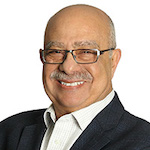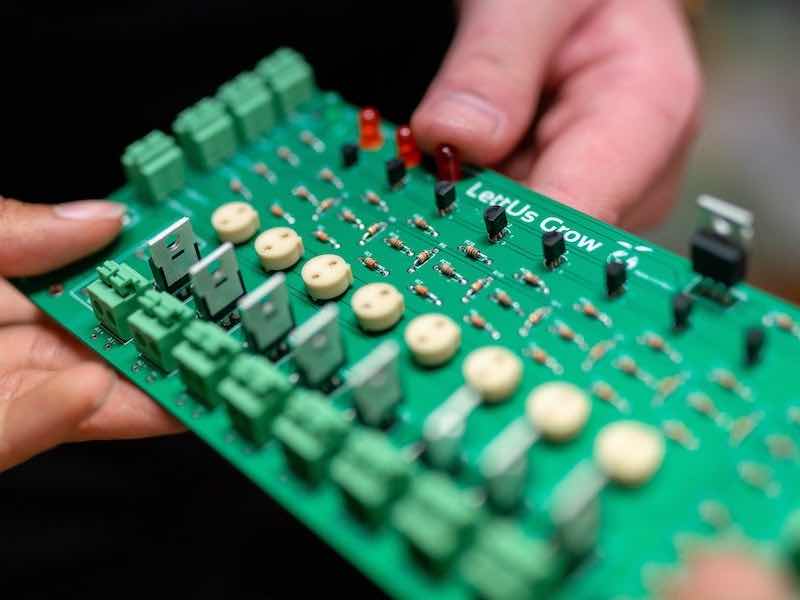Surface finish R&D departments on the supplier side have been very busy developing new finishes to meet the ever-changing demands of the electronics industry.
 George MiladToday, designers have a wide variety of finishes to choose from HASL (hot air solder leveling), electrolytic nickel gold, OSP (organic solderability preservative), ENIG (electroless nickel/immersion gold), I-Ag (immersion silver), I-Sn (immersion tin), ENEPIG (electroless nickel/ electroless palladium/immersion gold), EPIG (electroless palladium/immersion gold), EPAG (electroless palladium/auto-catalytic gold), DIG (direct immersion gold), and ISIG (immersion silver/immersion gold). In addition, most finishes offer variations within their process, specifying the thickness of the layers and the type of electrolyte used to meet specific performance criteria.
George MiladToday, designers have a wide variety of finishes to choose from HASL (hot air solder leveling), electrolytic nickel gold, OSP (organic solderability preservative), ENIG (electroless nickel/immersion gold), I-Ag (immersion silver), I-Sn (immersion tin), ENEPIG (electroless nickel/ electroless palladium/immersion gold), EPIG (electroless palladium/immersion gold), EPAG (electroless palladium/auto-catalytic gold), DIG (direct immersion gold), and ISIG (immersion silver/immersion gold). In addition, most finishes offer variations within their process, specifying the thickness of the layers and the type of electrolyte used to meet specific performance criteria.
Historically, HASL was among the first finishes that saw wide use as a solderable finish. HASL was accompanied by tin-lead reflow, which was suitable as long as tin-lead soldering remained the primary assembly method. Both HASL and tin-lead reflow required a thermal excursion. The technology (mostly double-sided) at that time could tolerate it.
Simpler, Faster, and Safer
OSP was introduced as a simpler, faster, and safer procedure. OSP gained market share as long as the primary assembly method required only a single excursion to tin-lead reflow temperature.
With the introduction of SMOBC (solder mask over bare copper), the dominant finishes were HASL and OSP for pads and electrolytic nickel/electrolytic hard gold for contacting fingers.
As MLB (multilayer boards) and surface mount were introduced, HASL topography (lack of planarity) became a problem at the assembly as the pad size continued to shrink. ENIG and OSP became the better choices. ENIG had the advantage over OSP in that it withstands multiple thermal excursions required at assembly. ENIG was also aluminum wire bondable and had a good metallic contacting surface. These advantages justified the higher cost and complexity of processing associated with ENIG.
For a few years, ENIG, HASL, OSP, and electrolytic nickel gold were the staple for the industry, with HASL and OSP for simpler products that require a single thermal excursion at assembly. ENIG was the choice for surface mount, and BGA (ball grid array) was used for surface mount, where co-planarity was paramount. Electrolytic nickel gold was used to plate hard gold over nickel for insertion fingers, and with a thicker, soft gold layer, it was the choice for gold wire bonding.
Increased Reflow Temperatures
With the introduction of lead-free solder—an example is SAC 305—the reflow temperature was increased from 230°C to 260°C. Standard OSPs could not withstand the reflow temperature of LF solder, and a new generation of high-temperature OSPs came to the market. This class of OSPs could withstand the increased reflow temp of LF solder and was capable of withstanding multiple thermal excursions.
With continued miniaturization, electrolytic nickel gold for gold wire bonding became a problem, as it required electrical continuity through bussing.
In the same time frame, the industry saw the introduction of immersion silver and immersion tin. Immersion silver (a metallic surface finish) is a solderable, coplanar contacting surface. Although silver has some limitations, like tarnishing and creep corrosion, it has its place with certain process modifications to contain tarnishing and creep corrosion. Immersion tin became a viable finish, particularly for press-fit type connectors where its lubricity came into play. Of course, it was solderable for LF solder. For immersion tin, the IPC specified a thick layer (40 μin or one micron) to counter the natural tendency to form an IMC (copper-tin intermetallic) on storage or thermal excursion. If the IMC works its way to the surface, it renders the surface non-solderable.
With continued miniaturization, electrolytic nickel gold for gold wire bonding became a problem, as it required electrical continuity through bussing. There was a need for a gold wire-bondable surface that was non-electrolytic; this resulted in the development of the ENEPIG (electroless nickel, electroless palladium, immersion gold) surface finish. The palladium layer between the nickel and the surface gold is a diffusion barrier to the migration of nickel to the surface, which can create bond failures. ENEPIG has all the advantages of ENIG plus gold wire bonding.
As the use of wireless networks and handheld devices continued to grow, massive data was transmitted through printed circuit boards in the form of high-frequency RF signals. It became clear that the electroless nickel layer in ENIG and ENEPIG creates a signal loss. This brought about the development of nickel-free surface finishes. At present, there are commercially available EPIG and EPAG, both nickel-free. Another finish that fits the bill is thicker DIG. A new addition to this group is ISIG, which is under development.
Wider Variety of Surface Finishes
On the manufacturing end, board shops choose the surface finishes they offer to their customers. The newer finishes that are in limited demand are relegated to contract plating shops. These shops offer a wider variety of surface finishes to the board shop, which will, in turn, subcontract their services. As the demand increases, the board shop will eventually establish in-house capability.
Designers have many choices where they balance availability, cost, manufacturability, and performance. In some instances, specific finishes are the only option (for example, nickel-free finishes for RF signal propagation). Designers also must specify the thickness to meet their design criteria.
All the finishes discussed here have big pluses as well as certain limitations.
The IPC Plating Committee has published specifications for ENIG, I-Ag, I-Sn, and ENEPIG. In the specifications, a thickness range for the different layers is included, as well as performance criteria. Designers can call out the IPC specification in lieu of specifying thickness and performance. It is important to note here that designers have the option of taking exceptions with any parts of the specification. Such exceptions are noted in the design drawings.
All the finishes discussed here have big pluses as well as certain limitations. All the finishes are in use today; a few have been obsoleted. Simpler board designs and performance expectations are readily met by simpler finishes like HASL, I-Ag, I-Sn, and OSP. The more sophisticated designs require more complex finishes, such as ENIG, ENEPIG, EPIG/EPAG, DIG, and ISIG, to meet the designer’s performance expectations.
George Milad is the National Accounts Manager for Technology at Uyemura International Corp. Visit https://www.uyemura.com



































